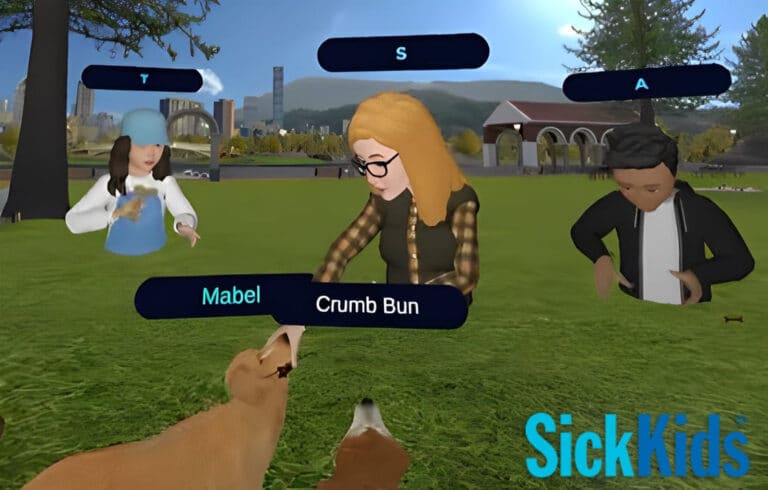Presence
One reason that virtual reality (VR) therapy has profound impacts on human psychology is how immersive it is. Once a user puts on their virtual reality headset, they are transformed into a new space– A new reality where everything from the laws of physics to their environment can be modified. Secondly, there are no screens that frame the experience. This is because headsets provide sensory information that the brain processes as everyday reality. Additionally, the headset tracks head and body movements making the user navigate the virtual space with their body. So, with sounds, sights, and even haptic feedback, VR mimics physical spaces and situations with digital technology. As a result, users feel a full sense of bodily presence in the environments they explore through their headsets.
Presence is divided into three categories; personal, social, and environmental. Personal presence is easily created via virtual mirrors or visual identifiers like virtual hands. Social presence is established when interacting with other virtual beings like avatars or characters in a natural way, like through conversation or body language. And finally, environmental presence is a combination of the two that makes users feel connected to their virtual environments. In order to have a better understanding of presence, the ITC-Sense of Presence Inventory uses a four-factor assessment. They measure physical space, engagement, naturalness, and negative effects from the user’s point of view. This way, researchers can grasp how users’ journeys might impact their emotional states. So, despite debates on the definition and study of presence, there is a consensus that VR activates a sense of presence in a variety of users. This allows for a change in the dynamics of therapy, making it all the more immersive and rewarding.
Immersion
In VR experiences, immersion and presence are particularly important for skill learning and insight creation. By providing a story or narrative that the user can participate in, VR transports individuals into worlds that foster engagement and enjoyment. The feeling is comparable to the satisfaction of watching a movie or playing a video game, but in VR, users have an active role in the story. Therefore, users feel a sense of agency and responsibility. VR therapy can gamify difficult situations to learn and practice new skills. With inspiring visuals and stories, users can gain skills transferrable to the real world, ranging from emotion regulation to mindfulness. Additionally, the interactive stories provided in VR can reduce negative self-focus and enable reflection on oneself from a new perspective. In the end, VR creates a platform for engaged learning that positively impacts personal narratives.
The potential of VR therapy is vast, and it promises to make its way into more therapy programs as VR becomes a part of our daily lives. This is because it enables experiential control for therapists, creates specialized scenarios for different needs, and produces environments for psychological growth and training. Practically, it immerses people in scenarios that are difficult to replicate in real life, costly, and sometimes even physically impossible. VR therapy is an outlet for agency, narrative change, and a next-level experience for healing.
Foretell Reality
Foretell Reality is a VR therapy platform that leverages immersion and presence to create intimate gathering spaces for therapy and support groups. The app uses lifelike avatars that track hand and body movements and creates a seamless sense of social presence.
References:
Green, M. C., Brock, T. C., & Kaufman, G. F. (2004). Understanding Media Enjoyment: The Role of Transportation Into Narrative Worlds. Communication Theory, 14(4), 311-327. doi:10.1111/j.1468-2885.2004.tb00317.x
Lessiter, J., Freeman, J., Keogh, E., & Davidoff, J. (2001). A Cross-Media Presence Questionnaire: The ITC-Sense of Presence Inventory. Presence: Teleoperators and Virtual Environments, 10(3), 282-297. doi:10.1162/105474601300343612
NewPathVR, N. (2020). VR Psychology. Retrieved August 13, 2020









